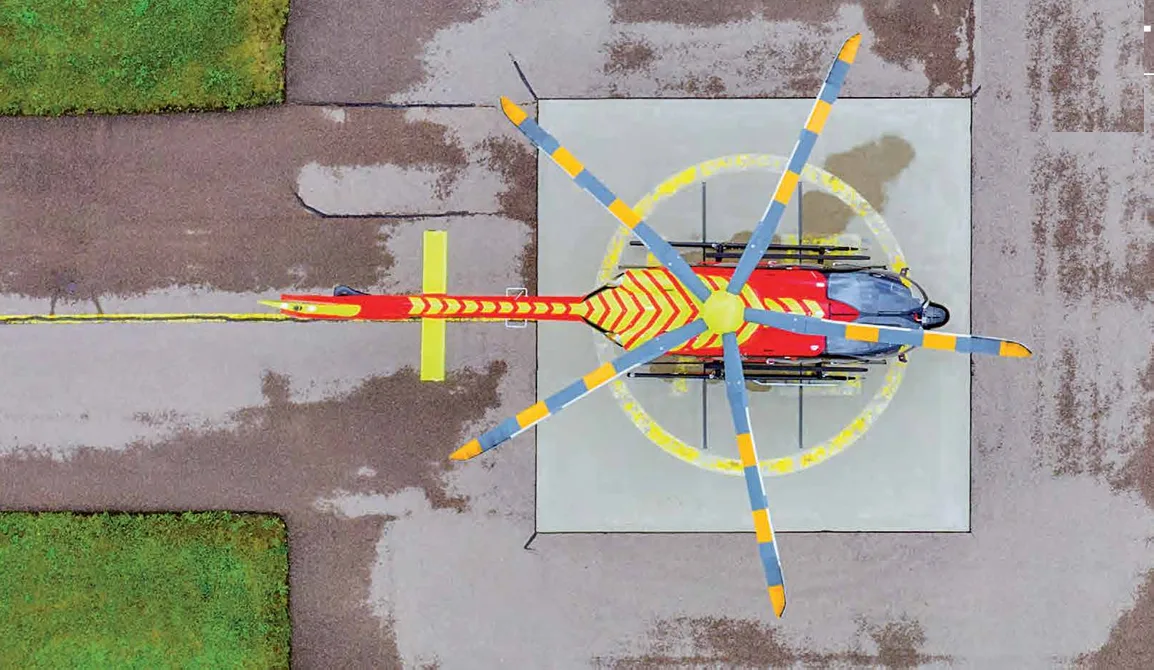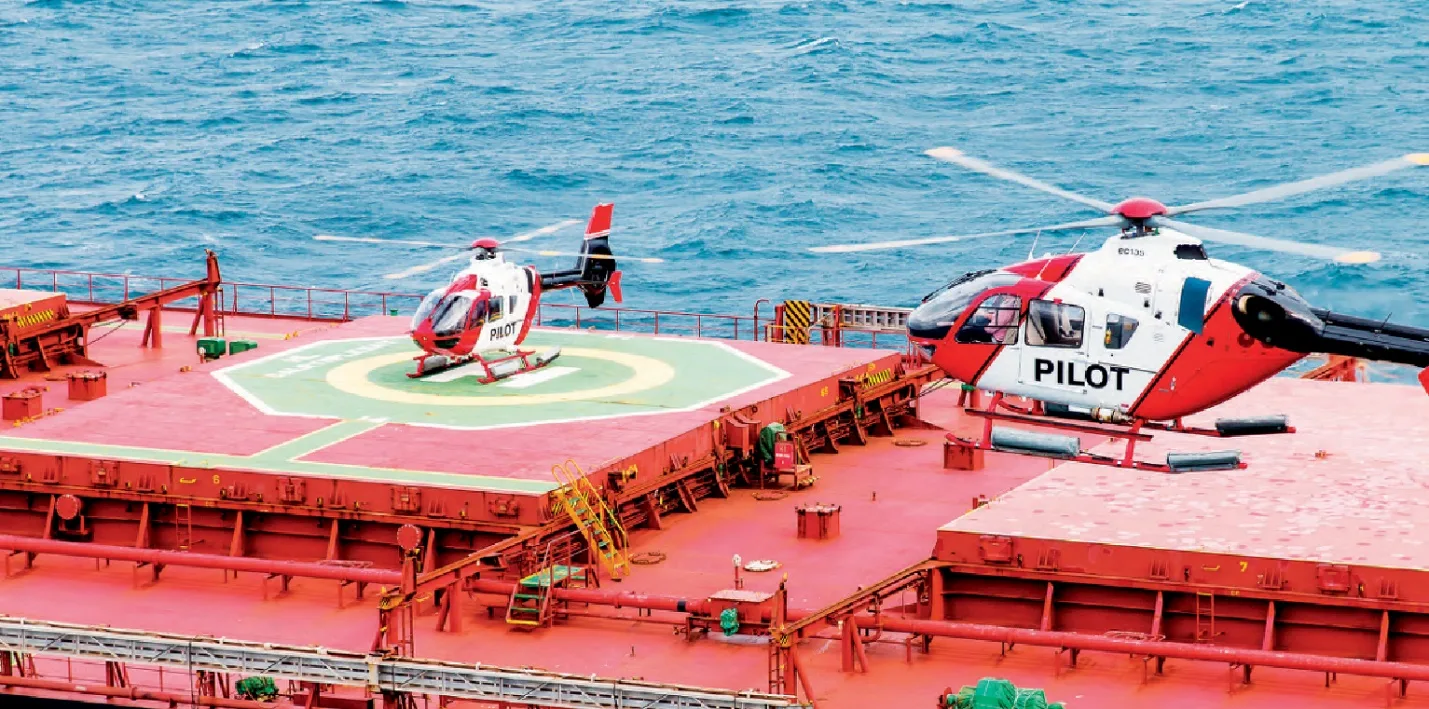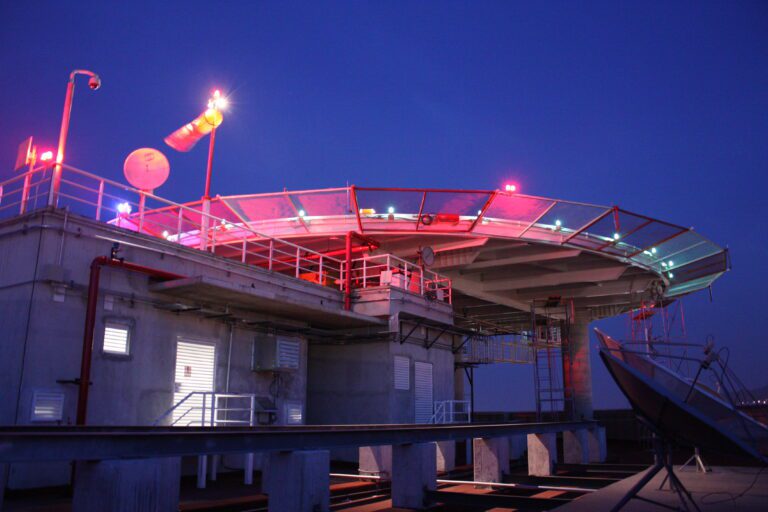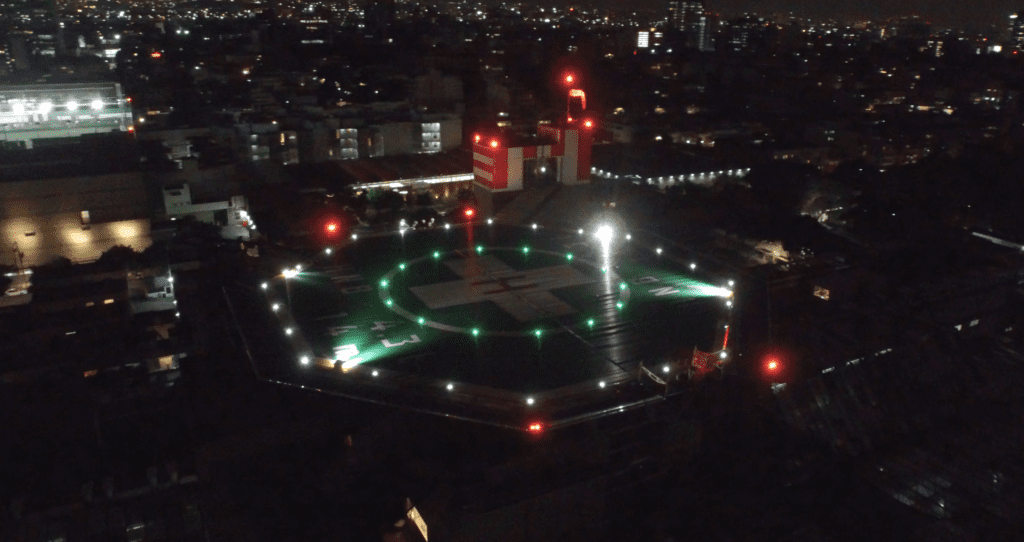Our services also provide detailed guidance and specifications in the planning, design, and operation of heliports to support the safe and efficient operation of helicopters operating under both visual flight rules (VFR) and instrument flight rules (IFR). Our objective is not intended to restrict or limit a pilot from determining the most suitable landing area for the helicopter operation but to provide maximum flexibility to rescue missions both on shore and off shore.

We provide full assistance and training for personnel involved in the design, construction, and operation of heliports, proponents of heliports, helicopter owners/operators, planning authorities, aerodrome operators and the Civil Aviation Authority. Our services provides standards for the planning, design and construction of heliports serving helicopters with single, tandem (front and rear) or dual (side by side) rotors.
Services include detailed guidance for compliance with heliport utilization following FAA and adaptation to local Civil Aviation Authority recommendations and standards for heliport design considering the following aspects:
Basic Layout including specifications for Clear approach/departure paths, Clear area for ground maneuvers, Final approach and takeoff area, Touchdown and liftoff area, Safety area and wind cone.
Heliport Lighting
Heliports that support night operations under visual meteorological conditions or instrument meteorological conditions for either day or night operations are lighted with TLOF and/or optional FATO perimeter lights, and useful visual aids including floodlights, landing direction lights, taxiway lights, lighted wind cone, heliport identification beacon, heliport approach path indicator and obstruction lights to mark objects in close proximity to the approach/departure path.
Heliport Devices and Instrumentation
Our services include specifications for Touchdown and Liftoff (TLOF) Lights, Flush green lights, Final Approach and Takeoff (FATO) Lights, Floodlights, Landing Direction Lights, Flight Path Alignment Lights, Visual Glide Path Indicator, Lighted Wind Cone, Heliport Identification Beacon, Taxiway Lights and Obstruction Lights, among others.

Lightweight: Offering structural integrity without overburdening the host building.
Easy Maintenance: Affirming longevity with minimal upkeep due to aluminum's resistance to wear and tear.
State-of-the-art Lighting Systems: Illuminating the landing zone for optimal pilot navigation.
Integrated Fire Suppression Systems: Prioritizing safety with rapid-response fire mitigation.
Customizable Dimensions: Providing tailored solutions for diverse operational demands.
International Standards Compliant: Meeting the stringent criteria of global standards like DNV, ABS, and RINA.
Our services also provide detailed guidance and specifications for fabricating and installation of helipads and heliports that combine safety, compliance, and innovation:

Reliability and Safety: Our helipads and helistops are engineered to meet or exceed all regulatory standards, providing a trusted landing zone for medical centers or private use. We provide a long-lasting design.
Space-efficient solutions: Our designs are tailored to make the most of limited rooftop space, offering versatile configurations and speedy construction.
Design and Engineering: Custom helipad design tailored to site specifications and compliance with aviation standards.
Manufacturing Specifications: Detailed Specification for Fabrication of lightweight, durable helipads for various applications (rooftop, ground, offshore).
Construction Specifications: Detailed Specifications for Full-service installation, including support framing and integration with existing structures.
Lighting Systems: Detailed Specifications for Installation of advanced lighting solutions, such as perimeter lights, floodlights, and LED options for visibility and safety.
Fire Suppression: Specs for deployment of integrated fire suppression systems, including passive fire-retarding designs and active foam-based solutions like DIFF systems or monitors.
Site Selection: Worldwide expert consultation for choosing optimal helipad locations based on safety and operational needs.
Compliance Support: Ensuring helipads meet international and national standards (e.g., FAA, ICAO, NFPA).
Monitoring Systems: Real-time data systems for wind speed, temperature, and motion to enhance operational safety.
Refueling Systems: Safe and efficient helicopter refueling setups for operational convenience.
Safety Equipment: Detailed Specifications for tie-downs, landing nets, and fall protection netting for elevated helipads.
Maintenance Services: Low-maintenance designs with support for upkeep and repairs as needed.
Testing and Certification: Friction testing and fire suppression trials to validate safety and performance standards.
- Touchdown and Lift-Off Area (TLOF)
- Dimension: The TLOF's minimum size is calculated using the formula 1D, where D is the overall length of the largest helicopter expected to use the helipad.
- Markings: The TLOF is usually marked with a circle or square to indicate the landing area. The markings are often painted in a contrasting color to the surface.
- Surface: Must be a load-bearing area capable of supporting the helicopter's weight. The surface material can vary from asphalt to concrete, depending on the requirements.
- Lighting: Perimeter lighting is often used to outline the TLOF, especially for night operations.
- Final Approach and Take-Off Area (FATO)
- Dimension: The minimum size is also determined by the formula 1D.
- Function: This is the defined area over which the final phase of the approach to hover and take-off is completed. It includes the TLOF and additional space for maneuvering.
- Obstacle Clearance: The FATO should be free of objects that could impair the helicopter's approach or take-off. This includes buildings, trees, and other potential hazards.
- Lighting: Similar to the TLOF, the FATO may also have perimeter, flood, and status lighting for night operations.
- Safety Area
- Dimension: This area surrounds the FATO and should be at least 35 feet wide.
- Function: It serves as a buffer zone in case of pilot error or mechanical failure. It is also used for emergency landings.
- Surface: The surface should be free of obstacles and capable of supporting the weight of the helicopter. It should also be graded for proper drainage.
- Markings: While not mandatory, some heliports use markings to delineate the safety area.
- Windsock
- Placement: he windsock should be visible from the approach path.
- Function: It indicates wind direction to assist pilots during landing and take-off.
- Turbulence: The windsock should be located at a distance that does not cause turbulence to the landing area.
- Lighting: For night operations, the windsock may be illuminated.
- Additional Features
- Taxiways and Parking Areas: Some heliports include taxiways and parking areas, which also have specific dimensional requirements.
- Instrument Procedures: For heliports with instrument procedures, additional space and obstacle clearance requirements apply.

- Heliport Type
- Categories: Surface-level, elevated, or helideck.
- Requirements: Each type has specific requirements for dimensions, safety features, and obstacle clearance.
- Touchdown and Lift-Off Area (TLOF)
- Dimension: Measured to the nearest meter or foot.
- Dimension Calculation: The TLOF dimensions are measured to the nearest meter or foot. The size is often based on the rotor diameter plus additional space depending on the type of landing gear (skid or wheel).
- Slope and Surface: Information on slope, surface type, and bearing strength in tonnes is required.
- Markings: Usually marked with an "H" and other specific markings depending on the type of heliport. Surrounding the "H" would be either a circle or cross.
- Final Approach and Take-Off Area (FATO)
- Dimension: Length and width are measured to the nearest meter or foot.
- Dimension Calculation: The FATO dimensions are usually calculated as 1.5 times the overall length of the largest helicopter expected to use the helipad.
- Example: If the largest helicopter has an overall length of 12 meters, the FATO should have a minimum length and width of 18 meters each.
- Obstacle Clearance: Similar to FAA guidelines, the FATO should be free of obstacles. ICAO specifies a series of imaginary surfaces for obstacle clearance, including the take-off climb surface and approach surface.
- True Bearing: Specified to one-hundredth of a degree.
- Slope and Surface: Must also be specified.
- Obstacle Limitation
- Clearance: These surfaces must be free from obstacles to ensure safe operations.
- Surfaces: Includes take-off climb surface and approach surface for non-instrument FATO.
- Wind Direction Indicators
- Number: At least one is required.
- Placement: Should be free from airflow disturbances caused by nearby structures.
- Visual Aids
- Types: Perimeter, Flood, Status, Repeater, and HAPI systems for slope indicators are recommended.
- Placement: Usually installed at the approach end of the helipad.
- Additional Notes for Helidecks
- Dimension: For helicopters with an MTOM (Maximum Take-Off Mass) of more than 3,175 kg, the FATO should accommodate a circle of diameter not less than 1.0 D.
- Protection Area: Should have no fixed objects and be capable of withstanding the traffic of the helicopters it serves.